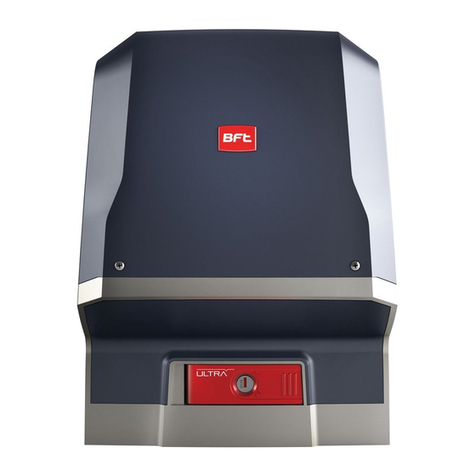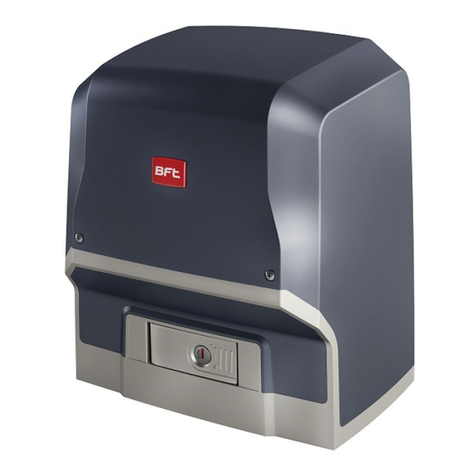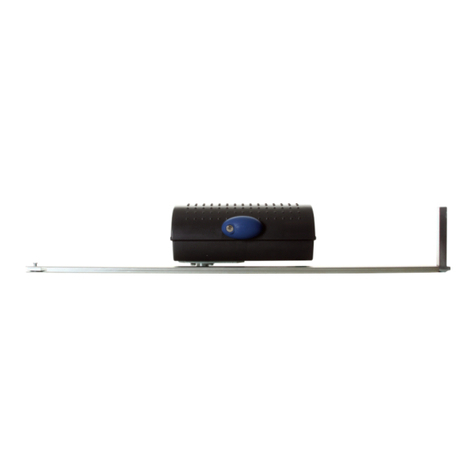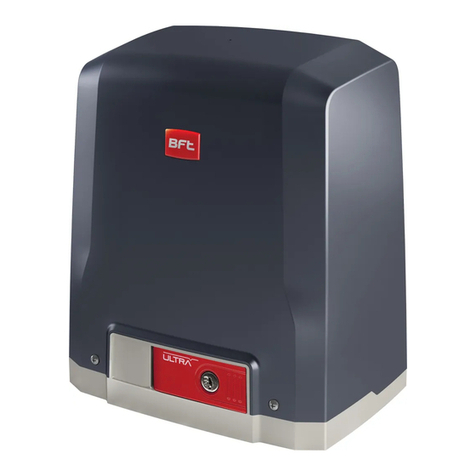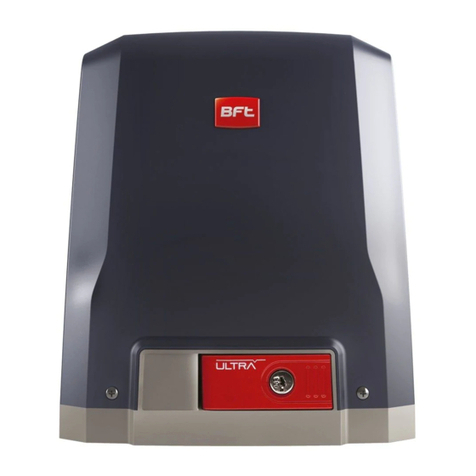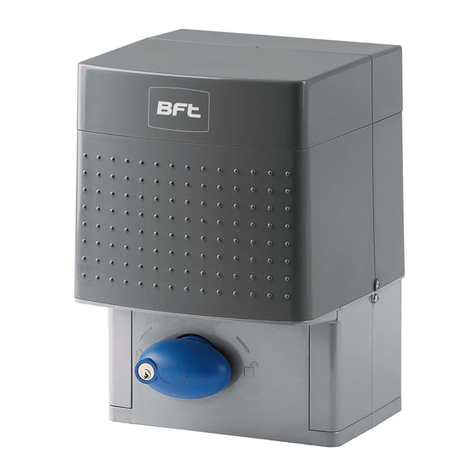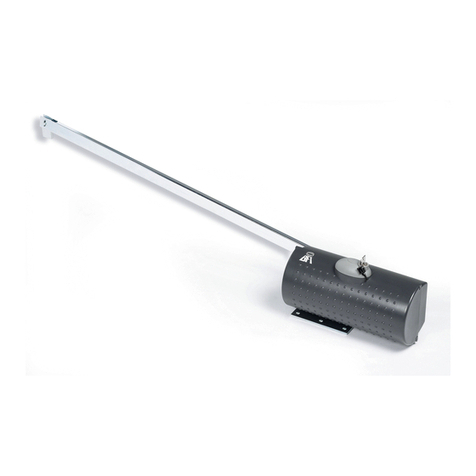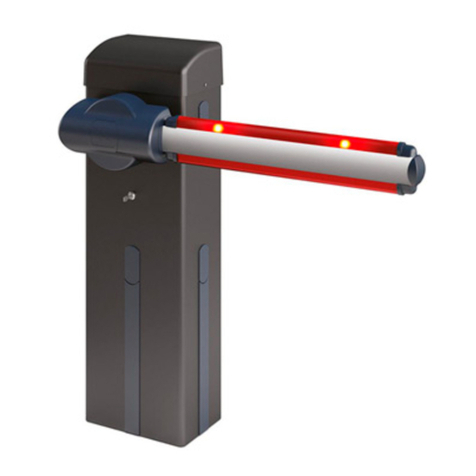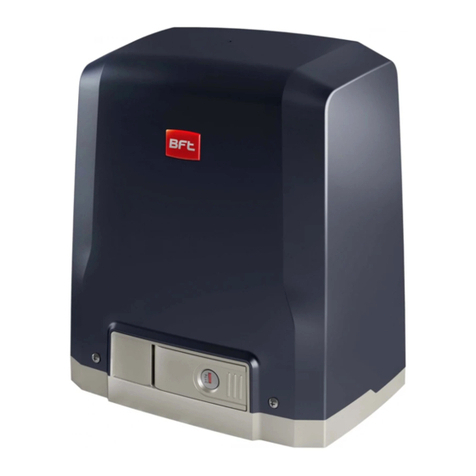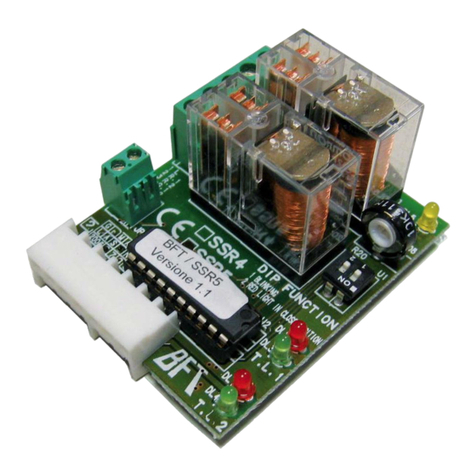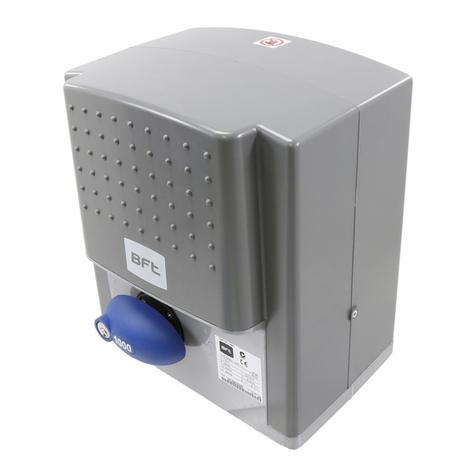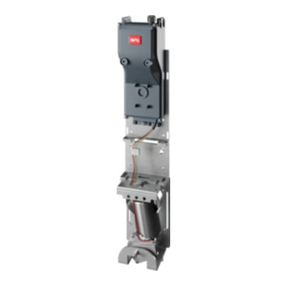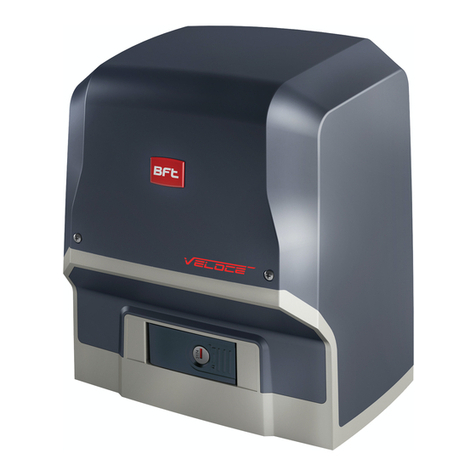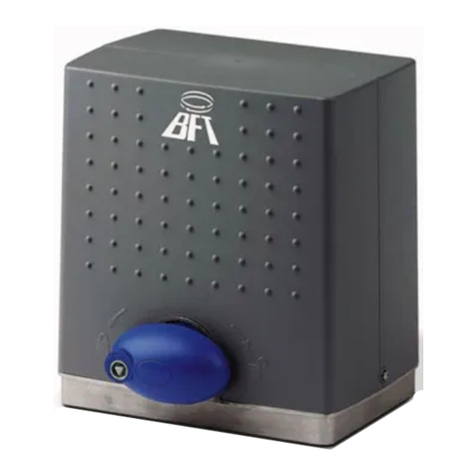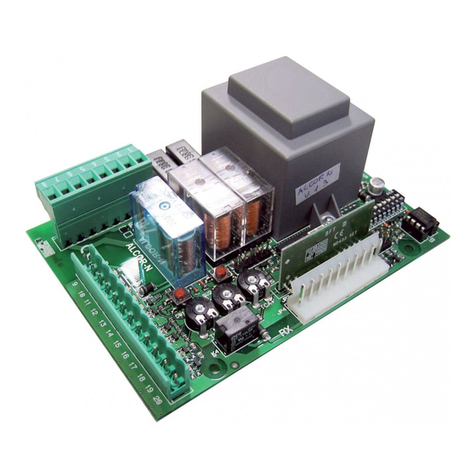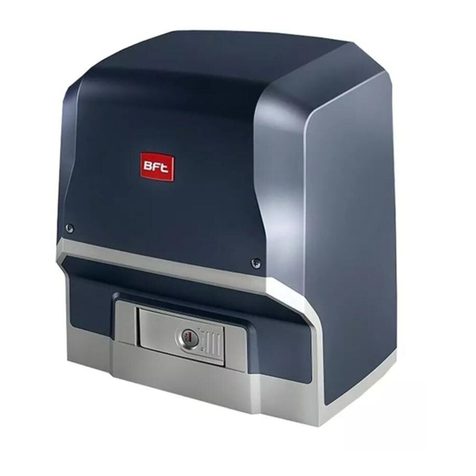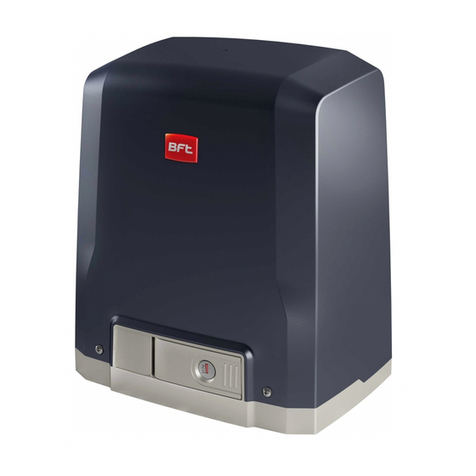¡ATENCIÓN!Instrucciones de seguridad importantes. Leer y seguir con atención
todas las advertencias y las instrucciones que acompañan el producto, ya que
la instalación incorrecta puede causar daños a personas, animales o cosas. Las
advertenciasylasinstruccionesbrindanimportantesindicacionesconcernientes
a la seguridad, la instalación, el uso y el mantenimiento. Conservar las instruc-
ciones para adjuntarlas a la documentación técnica y para consultas futuras.
SEGURIDAD GENERAL
Este producto ha sido diseñado y fabricado exclusivamente para el uso indicado en
la presente documentación. Otros usos diferentes a lo indicado podrían ocasionar
daños al producto y ser causa de peligro.
-Los elementos de fabricación de la máquina y la instalación deben presentar
conformidad con las siguientes Directivas Europeas, donde se puedan aplicar:
2004/108/CE, 99/05/CE y sus posteriores modicaciones. Para todos los países extra
CEE, además de las normas nacionales vigentes, para lograr un nivel de seguridad
apropiado se deben respetar también las normas antes citadas.
-La Empresa fabricante de este producto (en adelante“empresa”) no se responsabili-
za por todo aquello que pudiera derivar del uso incorrecto o diferente a aquel para
el cual está destinado e indicado en la presente documentación, como tampoco
por el incumplimiento de la Buena Técnica en la fabricación de los cierres (puertas,
cancelas, etc.), así como por las deformaciones que pudieran producirse durante su
uso.
-La instalación debe ser realizada por personal cualicado (instalador profesional, con-
forme a EN12635), en cumplimiento de la Buena Técnica y de las normas vigentes.
-Antes de instalar el producto, realizar todas las modicaciones estructurales de
modo tal que se respeten las distancias de seguridad y para la protección o aisla-
miento de todas las zonas de aplastamiento, corte, arrastre y de peligro en general,
según lo previsto por las normas EN 12604 y 12453 o eventuales normas locales
de instalación. Comprobar que la estructura existente cumpla con los requisitos
necesarios de resistencia y estabilidad.
-Antes de comenzar la instalación, comprobar la integridad del producto.
-La Empresa no es responsable del cumplimiento de la Buena Técnica en la reali-
zación y mantenimiento de los cerramientos por motorizar, como tampoco de las
deformaciones que surgieran durante el uso.
-Comprobar que el intervalo de temperatura declarado sea compatible con el lugar
destinado para instalar la automatización.
- Los operadores no están diseñados para ser utilizados en áreas peligrosas o en
áreas sujetas inundaciones, etc.
-No instalar este producto en atmósfera explosiva. la presencia de gases o humos
inamables constituye un grave peligro para la seguridad.
-Antes de realizar cualquier intervención en la instalación, interrumpir la alimenta-
ción eléctrica. Desconectar también eventuales baterías compensadoras si estuvie-
ran presentes.
-Antes de conectar la alimentación eléctrica, asegurarse de que los datos de placa
correspondan a los de la red de distribución eléctrica y que en el origen de la ins-
talación eléctrica haya un interruptor diferencial y una protección de sobrecarga
adecuados. En la red de alimentación de la automatización, se debe prever un in-
terruptor o un magnetotérmico omnipolar, con una distancia de apertura de los
contactos conforme a lo previsto por las normas vigentes.
-
Comprobar que en el origen de la red de alimentación, haya un interruptor diferencial
con umbral no superior a 0.03A y conforme a lo previsto por las normas vigentes.
-Comprobar que la instalación de puesta a tierra esté realizada correctamente: co-
nectar a tierra todas las piezas metálicas del cierre (puertas, cancelas, etc.) y todos
los componentes de la instalación con borne de tierra.
-La instalación se debe realizar utilizando dispositivos de seguridad y de mandos
conformes a la EN 12978 y EN12453.
-Las fuerzas de impacto pueden ser reducidas utilizando cantos deformables.
-Si las fuerzas de impacto superan los valores previstos por las normas, aplicar dispo-
sitivos electrosensibles o sensibles a la presión.
-Aplicar todos los dispositivos de seguridad (fotocélulas, cantos sensibles, etc.) ne-
cesarios para proteger el área de peligros de impacto, aplastamiento, arrastre, cor-
te. Tener en cuenta las normativas y las directivas vigentes, los criterios de la Buena
Técnica, el uso, el entorno de instalación, la lógica de funcionamiento del sistema y
las fuerzas desarrolladas por la automatización.
-Siempre incorpore las celdas fotoeléctricas apropiadas, los lazos de inducción y
otros dispositivos de seguridad para garantizar la protección del equipo y del per-
sonal. Se debe prestar una precaución extra cuando se usa el operador in modo
cierre automático.
-Aplicar las señales previstas por las normativas vigentes para identicar las zonas
peligrosas (los riesgos residuales).
-Una vez completada la instalación, colocar una placa de identicación de la puerta/
cancela.
-Este producto no se puede instalar en hojas que incorporan puertas (salvo que el
motor se active sólo cuando la puerta está cerrada)
-Si la automatización es instalada a una altura inferior a 2,5 m o está al alcance, es
necesario garantizar un grado de protección adecuado de las piezas eléctricas y
mecánicas.
-Instalar cualquier mando jo en una posición que no cause peligros y alejado de
las piezas móviles. En particular los mandos con hombre presente estén colocados
a la vista directa de la parte guiada y, salvo que no sean con llave, se deben instalar
a una altura mínima de 1,5 m y de manera tal de que no sean accesibles para el
público.
-Aplicar al menos un dispositivo de señalización luminosa (parpadeante) en posi-
ción vertical, además jar a la estructura un cartel de Atención.
-
Fijar de manera permanente una etiqueta correspondiente al funcionamiento del des-
bloqueo manual de la automatización y colocarla cerca del órgano de maniobra.
-Asegurarse de que durante la maniobra se eviten y se proteja de los riesgos me-
cánicos y en particular el impacto, el aplastamiento, arrastre, corte entre la parte
guiada y las partes jas alrededor.
-Una vez realizada la instalación, asegurarse de que el ajuste de la automatización
del motor esté congurado de manera correcta y que los sistemas de protección y
de desbloqueo funcionen correctamente.
-Usar exclusivamente piezas originales para todas las operaciones de mantenimien-
to y reparación. La Empresa no se responsabiliza de la seguridad y el buen fun-
cionamiento de la automatización, en caso que se utilicen componentes de otros
fabricantes.
-No realizar ninguna modicación a los componentes de la automatización si no se
cuenta con autorización expresa por parte de la Empresa.
-Instruir al usuario de la instalación sobre los eventuales riesgos residuales, los siste-
mas de mando aplicados y la ejecución de la maniobra de apertura manual en caso
de emergencia: entregar el manual de uso al usuario nal.
-Eliminar los materiales de embalaje (plástico, cartón, poliestireno, etc.) según lo
previsto por las normas vigentes. No dejar sobres de nylon y poliestireno al alcance
de los niños.
Todo aquello que no expresamente previsto en el manual de instalación,
no está permitido. El buen funcionamiento del operador es garantizado
sólo si se respetan los datos indicados. La Empresa no se responsabiliza
por los daños causados por el incumplimiento de las indicaciones dadas
en el presente manual.
Dejandoinalteradaslascaracterísticasesencialesdelproducto,laEmpresa
se reserva el derecho de realizar, en cualquier momento, modicaciones
que considere convenientes para mejorar la técnica, la fabricación y la
comercializacióndelproducto,sincomprometerseaactualizarlapresente
publicación.
ADVERTENCIAS PARA LA INSTALACIÓN
CONEXIONES
¡ATENCIÓN! Para la conexión a la red utilizar: cable multipolar de sección mínima de
5x1,5mm2ó 4x1,5mm2para alimentaciones trifásicas o bien 3x1,5mm2para alimen-
taciones monofásicas (a modo de ejemplo, el cable puede ser del tipo H05 VV-F con
sección de 4x1.5mm2). Para la conexión de los dispositivos auxiliares utilizar conduc-
tores con sección mínima de 0,5 mm2.
- Utilizar exclusivamente pulsadores con capacidad no inferior a 10A-250V.
- Todas las conexiones eléctricas y los cableados se deben realizar siguiendo las pau-
tas de AS/NZS 3000-2007. (O sus equivalencias en otros países que no sean Austra-
lia y Nueva Zelanda)
- Los conductores deben estar unidos por una jación suplementaria cerca de los
bornes (por ejemplo mediante abrazaderas) para mantener bien separadas las par-
tes bajo tensión de las partes con muy baja tensión de seguridad.
- Durante la instalación se debe quitar la funda del cable de alimentación para per-
mitir la conexión del conductor de tierra al borne especíco, dejando los conducto-
res activos lo más cortos posible. El conductor de tierra debe ser el último a tensar-
se en caso de aojamiento del dispositivo de jación del cable.
¡ATENCIÓN! los conductores a muy baja tensión de seguridad se deben mantener
físicamente separados de los circuitos a baja tensión.
La accesibilidad a las partes bajo tensión debe ser posible exclusivamente para el
personal cualicado (instalador profesional).
CONTROL DE LA AUTOMATIZACIÓN Y MANTENIMIENTO
Antes de que la automatización quede denitivamente operativa, y durante las in-
tervenciones de mantenimiento, controlar estrictamente lo siguiente:
-Comprobar que todos los componentes estén jados rmemente.
-Controlar la operación de arranque y parada en el caso de mando manual.
-Controlar la lógica de funcionamiento normal o personalizada.
-Sólo para cancelas correderas: comprobar el correcto engranaje de la cremallera -
piñón con un juego de 2 mm a lo largo de toda la cremallera; mantener el carril de
desplazamiento siempre limpio y libre de desechos.
-Sólo para cancelas y puertas correderas: comprobar que la vía de desplazamiento
de la cancela sea lineal, horizontal y las ruedas sean aptas para soportar el peso de
la cancela.
-IMPORTANTE: asegúrese de que haya retenedores de compuerta bien instalados en
las posiciones de compuerta completamente abierta y cerrada. Estos retenedores
se deben proyectar e instalar en manera tal de ser lo sucientemente fuertes para
detener la puerta si los límites fallan en algún momento.- Sólo para can-
celas correderas suspendidas (Cantilever): comprobar que no se produzca ninguna
bajada u oscilación durante la maniobra.
-Sólo para cancelas batientes: comprobar que el eje de rotación de las hojas esté en
posición perfectamente vertical.
-Sólo para barreras: antes de abrir la portezuela el muelle debe estar descargado
(mástil vertical).
-Controlar el correcto funcionamiento de todos los dispositivos de seguridad (foto-
células, cantos sensibles, etc.) y el correcto ajuste de los dispositivos de seguridad
antiaplastamiento, comprobando que el valor de la fuerza de impacto, medido en
los puntos previstos por la norma EN 12445, sea inferior a lo indicado en al norma
EN 12453.
-Las fuerzas de impacto pueden ser reducidas utilizando cantos deformables.
-
Controlar el buen funcionamiento de la maniobra de emergencia donde esté presente.
-
Controlar la operación de apertura y cierre con los dispositivos de mando aplicados.
-Comprobar la integridad de las conexiones eléctricas y de los cableados, en parti-
cular el estado de las cubiertas aislantes y de los sujetacables.
-Durante el mantenimiento limpiar las ópticas de las fotocélulas.
-
Durante el periodo en que la automatización está fuera de servicio, activar el desblo-
queo de emergencia (véase apartado “MANIOBRA DE EMERGENCIA”), de manera tal de
dejar libre la parte guiada y permitir la apertura y el cierre manual de la cancela.
-Si el cable de alimentación está dañado, el mismo debe ser sustituido por el fa-
bricante o por el servicio de asistencia técnica de éste o por una persona con una
capacitación similar, de manera tal de prevenir cualquier riesgo.
-Si se instalan dispositivos de tipo “D” (tal como los dene la EN12453), conectados
en modo no comprobado, establecer un mantenimiento obligatorio con frecuen-
cia al menos semestral.
- El mantenimiento, como se ha descrito anteriormente, se debe repetir por lo
menos anualmente o con intervalos menores si las características del lugar o
de la instalación lo requirieran.
¡ATENCIÓN!
Recordar que la motorización sirve para facilitar el uso de la cancela/puerta pero
no resuelve problema de defectos o carencias de instalación o de falta de mante-
nimiento.
DESGUACE
La eliminación de los materiales debe hacerse respetando las normas vigentes. En
el caso de desguace de la automatización no existen peligros o riesgos particulares
causados por dicha automatización. En caso de recuperación de los materiales, se
recomienda que los mismos sean separados por tipo (partes eléctricas - cobre - alu-
minio - plástico - etc.).
DESMANTELAMIENTO
Si la automatización es desmontada para luego ser montada nuevamente en otro
sitio hay que:
Interrumpir la alimentación y desconectar toda la instalación eléctrica.
-Quitar el accionador de la base de jación.
-Desmontar todos los componentes de la instalación.
-
Si algunos componentes no pudieran ser quitados o estuvieran dañados, sustituirlos.
ESPAÑOL
OBERON TRI A2000 INV - 9

